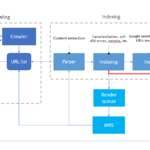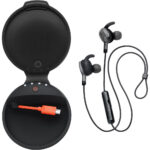
By Upasana Dhingra ,Certified Nutrition and Fitness Consultant at FITTR
The new trend – QUANTIFIED NUTRITION- to achieve all your fitness goals – fat loss, muscle gain, etc
Let’s break down the term – QUANTIFIED NUTRITION
QUANTIFY means to measure the quantity of and NUTRITION means the food that you consume
In simple terms, quantified nutrition means to measure the amount of food that you plan to consume on a daily basis
Sounds weird, right?
I understand you must be wondering that who measures the food and eat. It is not practical and sounds stupid too but let me tell you that it is neither stupid and nor impractical
HOW DOES QUANTIFIED NUTRITION HELP?
First things first, we need to be in a calorie deficit, which means eat less calories than our maintenance calories, in order to lose weight and vice versa.
Now, each food item has some calories which is a unit of energy measurement
For example, we have three major macro nutrients known as Protein, Fat, Carbs that our food comprises of and all these macros have different calories.
1g of protein has appx 4 calories,1g of carbs has appx 4 calories and 1g of fat has appx 9 calories
Now, let’s say you have a goal of fat loss and your maintenance calories or TDEE (total daily energy expenditure) is 2000 and you decide to lose weight, then you should create a deficit from your maintenance calories.
Let’s assume you decide to start with a 300 deficit and follow 1700 calories plan
Here comes the role of quantified nutrition –
If you don’t measure your food and follow an ad-libitum approach, how are you going to determine that you are eating 1700 calories and are in a deficit.
You may be eating less or more than 1700 calories and if you eat more than 1700 calories, you will end up gaining weight instead of losing
Another important thing to keep in mind while following quantified nutrition is to measure the amount of food raw and not cooked.
Why raw and not cooked?
Because we all have a different cooking method. For example, if you are cooking any pulse (daal), some people prefer to use less water and prepare thick texture daal and some prefer to use more water and prepare liquid texture daal.
Now, if you measure the daal after cooking, you cannot determine exactly how much is the amount of daal in it and how much is the water and thus, leaving you in dilemma
People often tell me that they can’t measure the food in grams and can measure in the form of cups and bowls.
Let me tell you why this might not be the best approach.
Different household have different size of cups and bowls. For example, my 1 bowl can contain 100g of daal and your 1 bowl can contain 200 gram of daal and if you are following a diet plan that asks you to eat 1 bowl of daal, you may end up eating less or more based on the size of the bowl that is available in your home.

Another important fact is that we any measure our food in some form or the other already.
For example, I cup milk, 2 chapatis, 1 bowl vegetable and with quantified nutrition, you just have to take one step ahead and measure your food raw before cooking.

SOME FUN FACTS
We measure everything in terms of numbers in our life already. For example
- If you go to grocery shop to buy onion, you don’t tell the shopkeeper to give you some onion, instead you tell him that quantity of onion, say 1 kg,that you want to buy and you pay him accordingly
- When you want to lose weight desperately, then also you have a number in your mind, let’s say, you want to be 20kg lighter from your current weight
- When you go for a job interview and interviewer asks your salary expectations, you don’t tell him that you need some money. You tell him the exact figure that you have in mind
Similarly, when it comes to your health and fitness related goals, you can also start with measuring your food raw and achieve your goals in a shorter period of time instead of measuring your food cooked or not measuring your food at all and thus, delaying your progress.
I know, it is a bit overwhelming in the beginning but once you start doing it and getting results, there is no going back and it is going to be fun for you.
By Upasana Dhingra
Certified Nutrition and Fitness Consultant at FITTR








